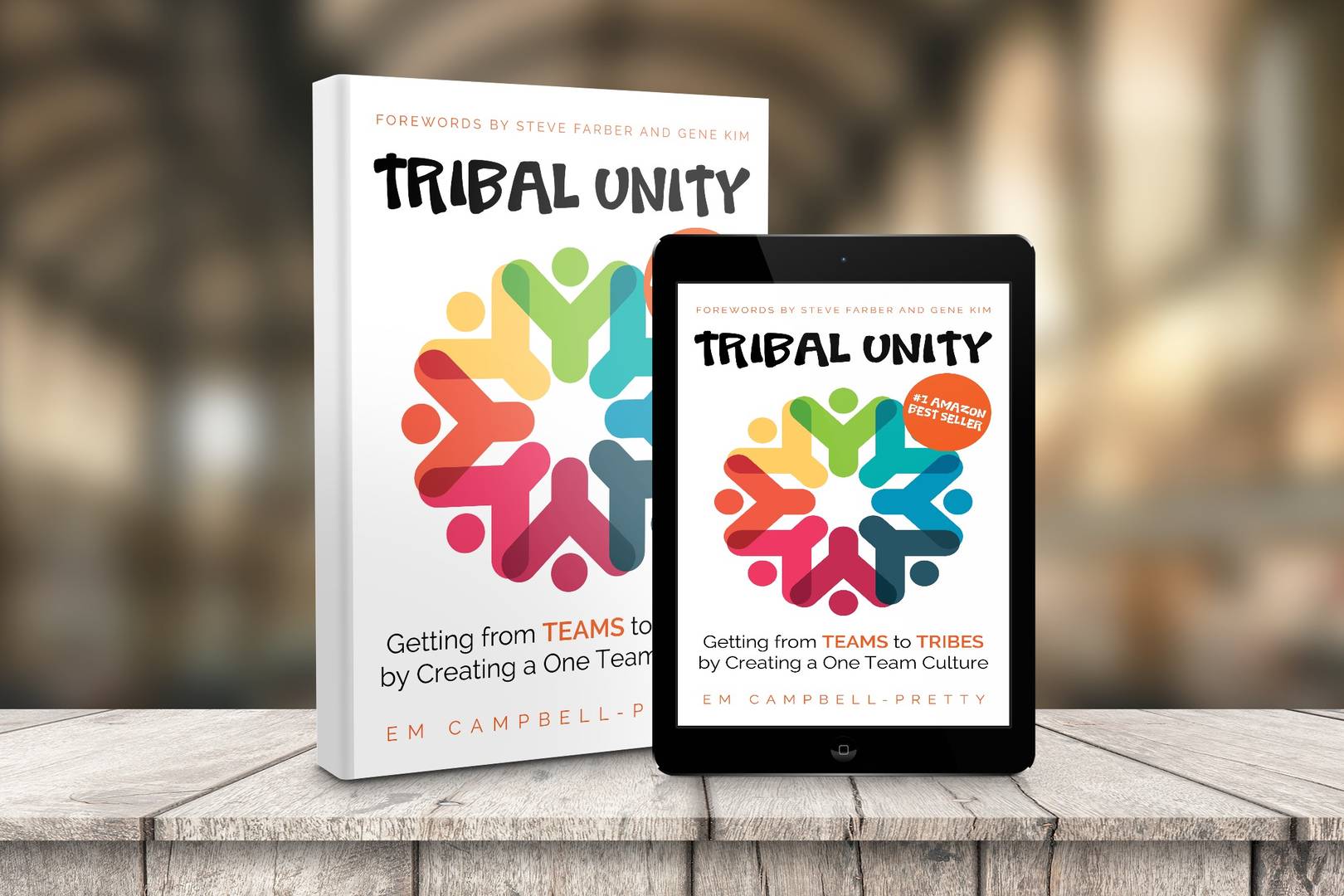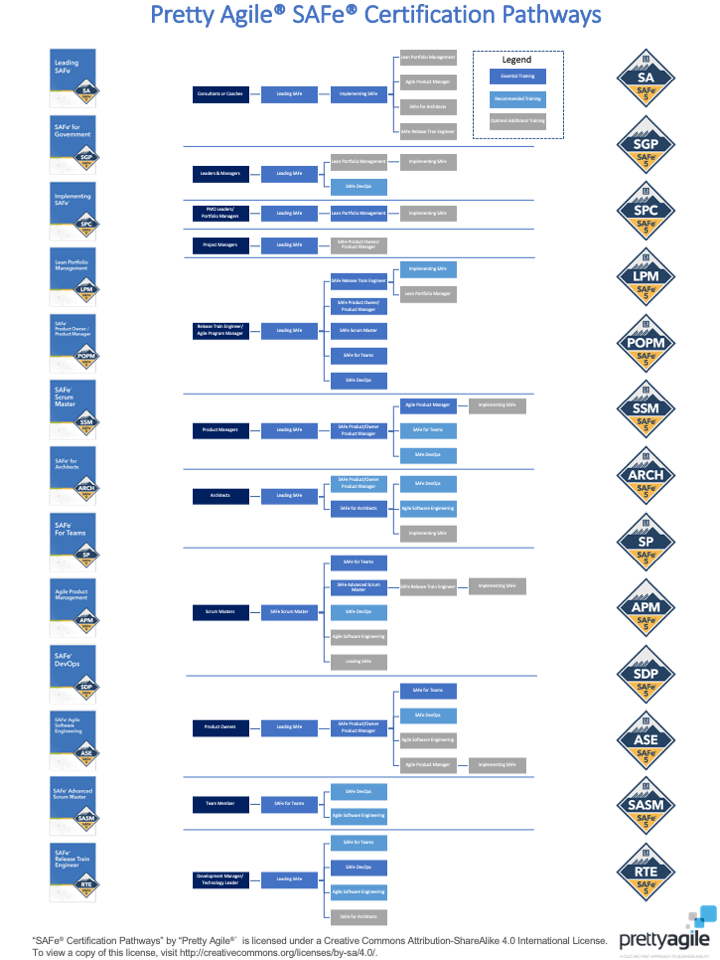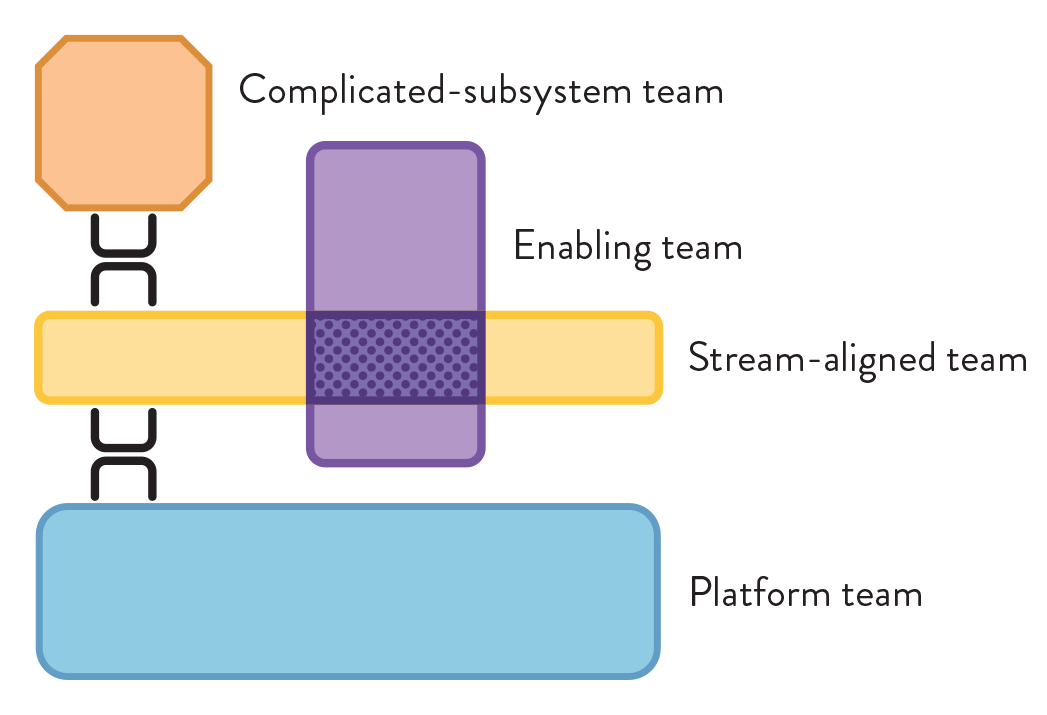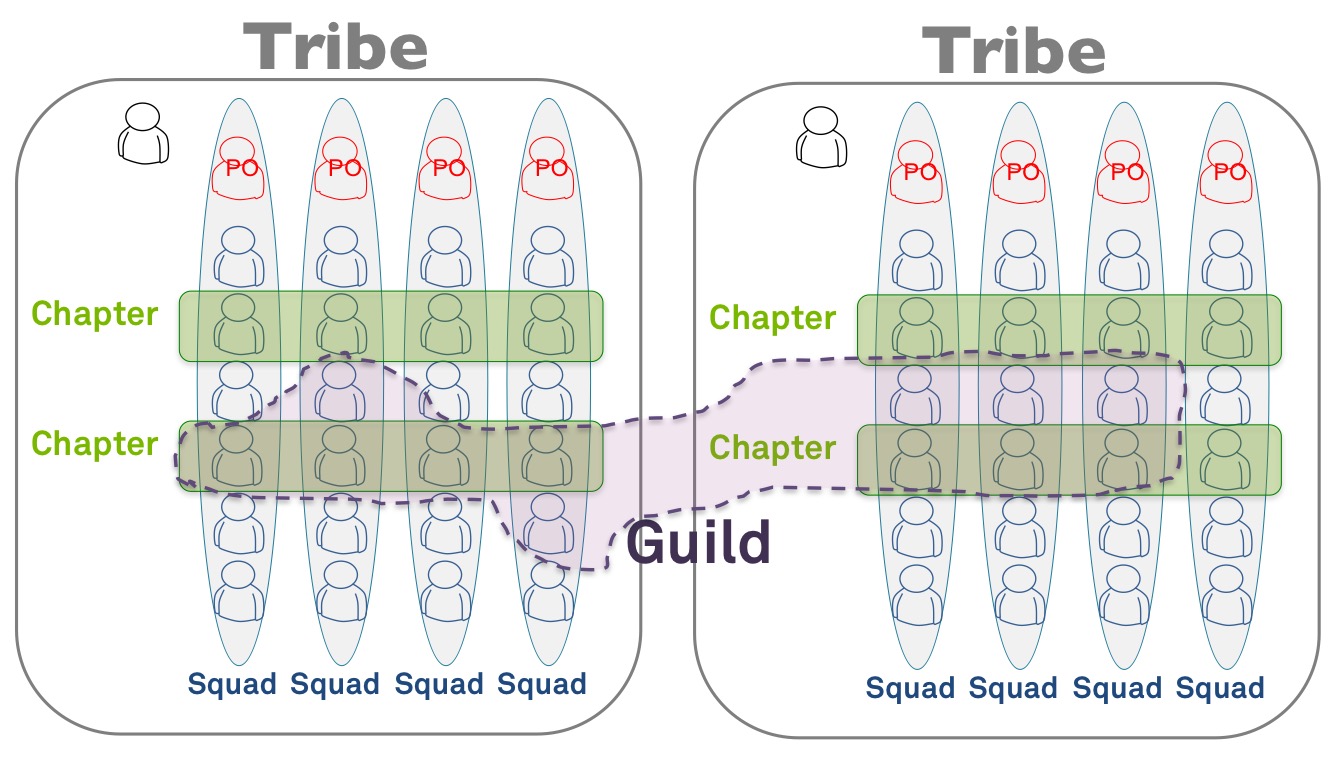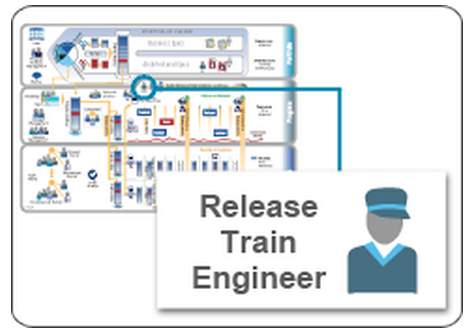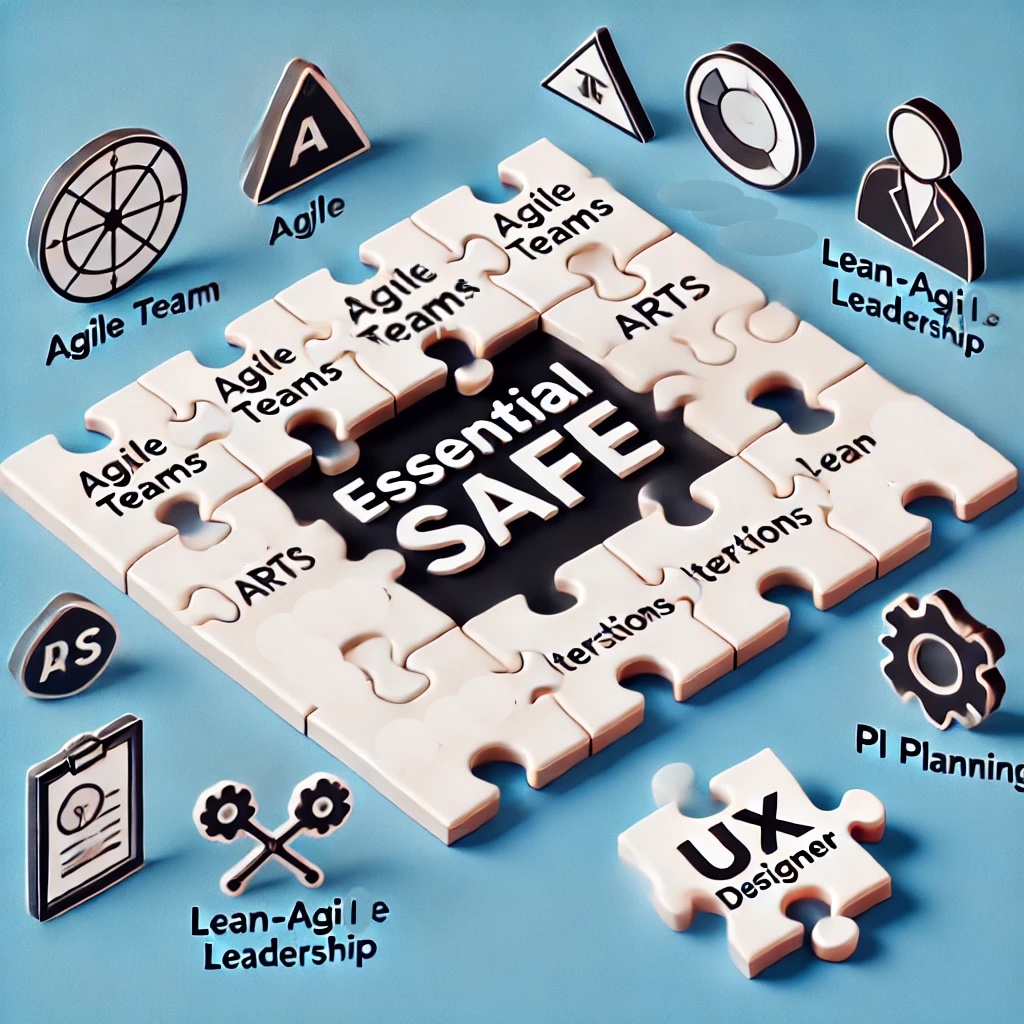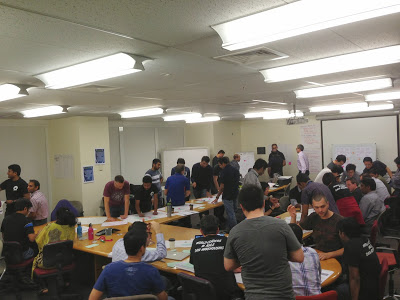- AI-Native Training
- SAFe Training
- Choose a Course
- Public Training Schedule
- SAFe Certifications
- Leading SAFe
- Implementing SAFe
- Advanced SAFe Practice Consultant
- Leading SAFe for Government
- SAFe Lean Portfolio Management
- SAFe Release Train Engineer
- SAFe for Hardware
- SAFe for Architects
- Agile Product Management
- SAFe Scrum Master
- Advanced Scrum Master
- SAFe DevOps
- SAFe Product Owner/Product Manager
- SAFe Agile Software Engineering
- SAFe for Teams
- SAFe Micro-credentials
- Agile HR Training
How do I justify full-time Scrum Masters for my Agile Release Train?
It feels like every time we launch an Agile Release Train, one of the first hard conversations we have is the need for a full-time dedicated Scrum Master for every Agile team. I suspect there are two main reasons this conversation comes up time and again. The first and perhaps most obvious is that we are a SAFe shop, and the Scaled Agile Framework suggests shared Scrum Masters is an acceptable approach. The second, and perhaps equally as likely, is that the person asking the questions isn’t clear about what a Scrum Master does and how they add value.
Let’s start by reflecting on the role of the Scrum Master in SAFe. The Scrum Master is a facilitator and a team coach, or at least that is the intent of the role. Your reality may well be different! So perhaps a little myth-busting is in order. A Scrum Master is not an administrator or a Jira or tool updater. To be clear, we are not advocating for the addition of a full-time administrator for every Agile team!
Why do Agile Teams need a coach?
We see two scenarios when launching Agile Release Trains - teams are either new to Agile or have been doing Agile for some time but not very well. Either way, they will need some help to improve and eventually master the new way of working. Of course, we begin with SAFe for Teams training, delivered by a suitably experienced SAFe Practice Consultant. However, no matter how good, two days of training never made anyone an expert. As Destin Sandlin of SmarterEveryDay.com says, “Knowledge ? Understanding”. This is where good Scrum Masters become worth their weight in gold.
The idea of using a coach is not at all unique. We see it in sports, business and for some in their personal lives. Consider for a moment some of the greatest sporting franchises in the world - the New York Yankees, Manchester United, and the New Zealand All Blacks. All of these teams always have coaches, even when they are winning championships. Even when they are at the top of their game, they always have full-time dedicated coaches. Because this is what being great requires. Agile teams are no different; they are at their best when they have a dedicated Scrum Master coaching them to improve how they work together to deliver value.
Why do Agile Teams need a facilitator?
Agile teams are intended to be collaborative. Agile teams in SAFe typically use Scrum as a framework for collaborative ways of working. The Scrum Master facilitates Scrum and SAFe events for the agile team. There are 5 events in Scrum that require facilitation: the sprint, sprint planning, the daily scrum, the sprint review and the sprint retrospective. (Note: SAFe uses the term iteration instead of sprint and team sync instead of daily scrum.) In SAFe, the Scrum Master also facilitates their agile team’s participation in the Planning Interval, PI Planning, ART Sync, System Demo and Inspect & Adapt.
All events need a facilitator, and it is very difficult to be an active participant in an event that you are also the facilitator of. The preparation required for a well-facilitated event is twice the timebox of the actual event. For example, 2-hours of preparation is needed for a one-hour event. The Scrum Master, as the team’s facilitator, ensures that all voices are heard, discussions are focused, conflict is constructive, and outcomes are clearly articulated and committed. To quote Sam Kaner, “A facilitator’s job is to support everyone to do their best thinking.”

What results should I expect to see from an effective Scrum Master?
Discipline
The right process mattered. Disciplined planning procedures mattered. Without them, we would have never been successful.–Jocko Willink and Leif Babin, Extreme Ownership
An agile team is, in essence, a system, “a network of interdependent components that work together to try to accomplish the aim of the system.” In The New Economics, Deming says, “A system must be managed. It will not manage itself.” While I’m not sure I would use the term manage to describe the role of the Scrum Master, the systems - being both the team and the way the team works - do need to be facilitated. It is unlikely that a new Agile team is going to be good at Agile from day one. Scrum and SAFe have a rhythm. The Scrum Masters know this rhythm by heart and beat the drum to keep the team and the Product Owner in sync. Don’t forget Iteration Planning is tomorrow. We are halfway through the Iteration team. Do we need to make any changes to our plan in order to deliver our iteration goals?
It takes time for the new way of working to become ingrained in the culture. In my experience, teams without Scrum Masters are quick to “throw the baby out with the bath water” when they don’t immediately see the value in an event or artefact. Teams without Scrum Masters will also be tempted to cut corners or skip events to " get more done”. They can fall into the trap of thinking they don’t need the basics and end up hurting rather than helping the backlog get delivered. Scrum Masters help the team be disciplined about how and when they adapt their ways of working.
Team Flow
Team Flow describes a state in which Agile teams deliver a continuous flow of value to the customer.– Scaled Agile Framework
As the facilitator of the iteration and the planning interval, Scrum Master has a unique perspective on how the work works. They can help the team visualise the flow, adopt flow-based practices and help the team recognise and act upon impediments to team flow.
When working in enterprises, impediments to the team's progress and flow are inevitable no matter how well the team plans. Teams without Scrum Masters can become overly focused on impediments and get stuck in analysis paralysis. When a team is blocked, it is the Scrum Master who facilitates removing the impediment. Often this means the team can continue working on other priorities while the Scrum Master tracks down the right person or people to solve the impediment.
One of the steepest learning curves for new agile teams and their Product Owners is shaping the work to enable incremental delivery of value. Scrum Masters help teams and Product Owners break work down into smaller, more easily demonstrable outcomes. This is often referred to as story splitting or feature slicing. Without this ability to slice work for user value, teams are not able to get the valuable feedback they need, stakeholders are not able to get the assurance they need, and customers have to wait longer for valuable outcomes. By coaching and facilitating teams to create small parcels of work, Scrum Masters also enable their team to improve Flow Velocity and Flow Time (aka throughput and cycle time).
Predictability
If you ask top executives what they would most like to see out of the software development process, many will answer “predictability.”–Dean Leffingwell
Agile teams without Scrum Master tend to over-commit and under-deliver. This is usually a result of overly optimistic plans and the desire to please stakeholders. Scrum Masters help teams right size their plans and limit work in progress, like a fitness coach that helps you create workout plans that help you achieve your fitness goals. By keeping one eye on the big picture, a good Scrum Master will help the agile team consistently make commitments it can keep, thereby improving the predictability of delivery.
Built-in Quality
Inspection does not improve the quality nor guarantee quality. Inspection is too late. The quality, good or bad, is already in the product. Quality cannot be inspected into a product or service; it must be built into it.—W. Edwards Deming
Scrum Masters coach teams in the adoption of built-in quality practices. For example, Agile Teams in SAFe are expected to have a Definition of Done. This is the team's shared definition of quality, often built on top of an Agile Release Train’s Definition of Done. While the team owns the definition, it is the Scrum Master who facilitates the team in creating a definition of done that is realistic and achievable. It is also the Scrum Master that reminds the team to hold themselves to account as they deliver, resulting in all work delivered by the team reliably and consistently meeting the definition of done.
Transparency
Over our years of researching and working together, we’ve learned something about clarity that has changed everything from the way we talk to each other to the way we negotiate with external partners. It’s simple but transformative: Clear is kind. Unclear is unkind.–Brené Brown
Transparency is one of SAFe’s core values. It is one of those things that seems simple on the surface but is far more tricky in practice. In cultures where failures result in ritual floggings (or perhaps the modern-day equivalent), transparency is likely to be a rarity. Scrum Masters see the bigger picture and help teams share both good and bad outcomes through ART Syncs, Iteration Reviews and System Demos. When you want to know what is really going on, the Scrum Masters always have their finger on the pulse and can help bring the team and stakeholders together for meaningful updates and feedback. A good Scrum Master knows to “pull the andon cord" when the team is in trouble.
Scrum Masters also play a crucial role in setting a culture of transparency in teams across your Agile Release Train. Scrum Masters model this behaviour and show teams how to share information, engage stakeholders and garner early feedback. This is key for cross-team collaboration towards delivering on the shared vision for your train.
Real Teams
..we want real teams, not just groups of people who happen to work together.–Em Campbell-Pretty
A real team is more than a group of people who happen to work together. Creating real teams takes significant focus and effort and rarely happens spontaneously. Great Scrum Masters are also great team builders. They help teams quickly move through Tuckman’s four stages of team development (i.e. forming, storming, norming and performing) and help them reset when things go awry.
Conflict is a natural part of team formation. As part of their role in building the team as a team, the Scrum Master helps the team navigate conflict. Scrum Masters recognise that teams working through diverse opinions is fundamental to creating shared understanding and enabling innovative solutions. They create the space and facilitate the team to sustainable agreements.
The Scrum Master often has a greater perspective than the team. They are able to recognise wins and encourage the team to celebrate success matter how big or how small. They are also able to help the team see the bright side of failure: This is great that we found this out now! Imagine if it were in 6 months’ time! Now we know this, how can we learn from this? What will we do better in the future?
Understanding of how and why Agile works
We are uncovering better ways of developing software by doing it and helping others do it.–The Agile Manifesto
Perhaps the most important outcome of having a dedicated Scrum Master is the impact the Scrum Master has on the Agile Team’s understanding of the new way of working. Many events and artefacts in SAFe and Scrum will be foreign to a newly formed agile team. Without context, they may well seem wasteful or meaningless. As time passes and the team’s memory of their initial training fades, the Scrum Master will also act as a teacher, helping the team connect with the value inherent in this way of working. Remember, when teams get under pressure, they are only human; they will quickly revert to their previous, more familiar ways of working.
Product Ownership
There is nothing so useless as doing efficiently that which should not be done at all.– Peter Drucker
Ok, I can see how you might be confused by this one; dedicated Scrum Masters lead to Product Ownership?! The Scrum Master is the coach of the entire agile team, including the Product Owner. The Product Owner is as likely to be new to Agile as the rest of the team. The Scrum Master helps the Product Owner focus on value delivery and balance the need to invest in technical enablers. As the person facilitating the Iteration, the Scrum Master, helps the Product Owner work with the team’s cadence, ensuring the Product Owner is prepared for key events like Iteration Planning and Backlog Refinement.
When wearing their facilitation hat, Scrum Masters can also support Product Owners in working with business and architect stakeholders to shape features using techniques like Impact Mapping. Scrum Masters should help build relationships between the team, the Product Owner, and the team's business and technical stakeholders. And let’s face it; everything is better when teams, product owners and stakeholders get along.
Can the Scrum Master also be the Product Owner?
No, no, no, no, no! But I see how you got here. The Scrum Masters know a lot about Product Ownership. You have budget and/or headcount constraints. Scrum Masters as Product Owner, solve two problems with one solution! However, it creates another set of problems! First, the Product Owner needs to be a subject matter expert in your business. If you have a full-time Subject Matter expert available to work with your agile team(s), harness that knowledge and have them support two agile teams!
Secondly, the roles have different agendas. The Scrum Master is focused on improving how the team works, and the Product Owner is focused on ensuring the team is working on the right priorities to deliver value to customers and the enterprise.
Can a SAFe Scrum Master work across two teams?
We do not recommend Scrum Masters are shared across teams; this always leads to suboptimal outcomes. Even really experienced, exceptionally capable Scrum Masters struggle when split across two teams. Running the iteration events becomes a full-time job, with no room to do the deep thinking and heavy lifting required to help teams improve how they work together and deliver value. One team is always waiting for the other to complete an event so that they can have their turn. Even the best Scrum Masters can only be in one place at a time. It’s not long before this pressure causes the Scrum Master to merge the teams - now we have an agile team of ~20 people - another anti-pattern.
Then, of course, there is PI Planning. How does one Scrum Master facilitate two teams through a two-day PI Planning event? They don’t! They find someone else to Scrum Master on the teams! And that is just not fair to anyone involved.
So, do I have to have a full-time Scrum Master?
It depends on how many of the above outcomes you hope to achieve! Part-time Scrum Masters tend not to have the time to do everything. At Pretty Agile, we prefer full-time dedicated Scrum Masters. Where this is not possible, we like Scrum Masters, who are 70% Scrum Masters and 30% team members; after all, a Scrum Master that can contribute to team delivery value is a good thing. It is important to recognise that this is a compromise, and you will need to temper your expectations accordingly. For this to work, it is critical that the person in this role is a Scrum Master first and foremost (and anything else is a bonus).
In our view, an investment in a Scrum Master for every team is an investment in maintaining and maturing your Agile practice. Ultimately, Scrum Masters will improve delivery, time to market, productivity and quality in your teams. As Peter Drucker said: Knowledge has to be improved, challenged, and increased constantly, or it vanishes.



